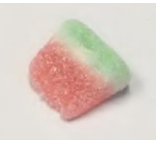On August 31, 2023, the US Patent & Trademark Office (PTO) published an Oral Hearing Guide to aid parties with oral arguments before the Patent Trial & Appeal Board. The newest Oral Hearing Guide updates the 2019 Oral Hearing Guide published on August 30, 2019, and is meant to be read in conjunction with the procedures set forth in the 2019 PTAB Trial Practice Guide.
The Oral Hearing Guide addresses the following topics:
- PTO locations for oral hearings
- Request for an oral hearing
- Notification of hearing in ex parte and reexamination hearings
- Notification of hearing in America Invents Act (AIA) trials
- Authorized persons to present oral arguments
- Attendance at hearings
- Guidelines for counsel during argument.
With a few minor exceptions, the administrative processes and procedures largely mirror those set forth in the 2019 Oral Hearing Guide and the 2019 PTAB Trial Practice Guide. The key changes are summarized below.
A Request for Oral Hearing in ex parte and reexamination proceedings must be filed as a separate paper with the required fee paid within a non-extendable time period. The Board will issue a Notice of Hearing to the parties involved once a case has been scheduled for oral argument, typically eight weeks before the scheduled hearing session. The Notice of Hearing provides information about the scheduled hearing, including the date, time, location, appearance options and general information about the oral hearing procedures before the Board.
In trial proceedings under the AIA—i.e., inter partes reviews (IPRs), covered business method reviews (CBMs or CBMRs), post-grant reviews (PGRs) and derivations—each party to a proceeding is afforded an opportunity to present its case before at least three members of the Board and is notified of the date and location options of an oral hearing in a Scheduling Order. The Guide further elaborates on the processes for requesting an oral argument, including the issuance of the Notice of Hearing (or Scheduling Order) when an oral hearing is requested. The Scheduling Order notifies the parties of the finalized hearing date, time and location. Once the Board has issued a Hearing Order, parties requiring a different arrangement should contact the Board with their request.
The Guide stipulates that the parties should state in their respective requests for oral argument whether they prefer a video hearing or an in-person hearing, and for in-person hearings, which available location the party prefers. To the extent the parties disagree, they should meet and confer. If the dispute cannot be resolved by meeting and conferring, the parties should inform the Board of each party’s individual preferences. The Board will notify the parties of its decision in accordance with current office policy.
The Guide further provides updated information stipulating that optional demonstrative exhibits must be marked with the words “DEMONSTRATIVE EXHIBIT – NOT EVIDENCE” in the footer and further elaborates on the procedures for parties to request pro hac vice admission for non-registered patent practitioners to participate in proceedings. Finally, the Guide discusses [...]
Continue Reading
read more

 Subscribe
Subscribe




